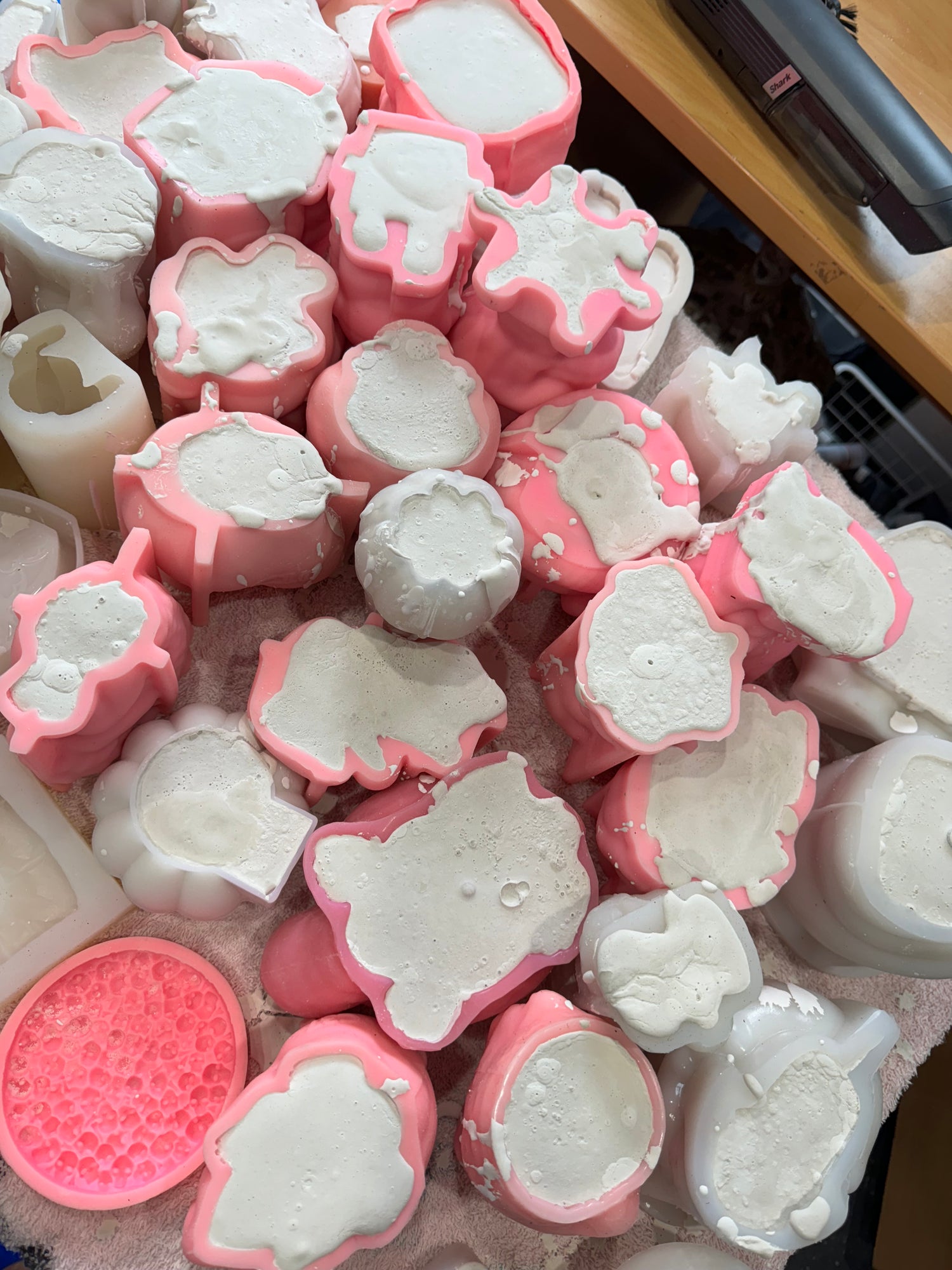The Awakening

About Veja Du
Reflecting on my journey, it's clear that I've always marched to the beat of my own drum. Growing up in the 90s, my heart belonged to alternative music and the raw authenticity of grunge—a passion that has remained unwavering over the years. Despite dabbling in various artistic styles, none quite resonated with me on a profound level. While showcasing my work in local exhibitions and markets, I yearned for a signature style that truly encapsulated my essence.
Driven by my love for vibrant hues and intricate patterns, I embarked on a creative exploration that led me to an unexpected medium: plaster. It was within the depths of this unconventional material that Veja Du emerged—a manifestation of my desire to embrace the macabre while celebrating the enchanting allure of fantasy art.

Pouring the plaster into silicone molds
Step 1
The process of mixing plaster and pouring it into silicone molds requires precision and attention to detail.Choose silicone molds that suit your desired shapes and sizes. Make sure they are clean and free requirements. Gradually add the plaster powder to water in a clean mixing container, following the manufacturer's instructions for the proper water-to-plaster ratio. Stir the mixture gently and consistently to avoid creating air bubbles.

Demolding and drying plaster molds
Step 2
Once the plaster molds have been poured and demolded, they require a few days to dry until they reach a chalky white consistency to the touch. At this stage, you can lightly sand them to refine the surface before beginning the painting process. This drying period is crucial for ensuring the plaster is fully cured and ready for further artistic embellishment.

Ready to start painting
Step 3
Painting the plaster mold typically requires applying several coats of a base color to achieve full coverage. After allowing each coat to dry completely, you can proceed to paint on any patterns or designs that align with the message or emotion you wish to convey through your artwork. This step allows for creative expression and customization, transforming the plaster mold into a unique and evocative piece of art.

Decorating and embellishing
Final step
The final step in the creation of your plaster piece involves adding embellishments or decorations. While leaving it solely painted is an option, incorporating a variety of mixed mediums can elevate your artwork into a one-of-a-kind creation. Whether it's adding intricate details with beads, sequins, or other decorative elements, this stage allows for personalization and the infusion of additional layers of texture and visual interest. Embracing mixed mediums opens up endless possibilities for creating captivating and unique pieces of art that truly stand out.